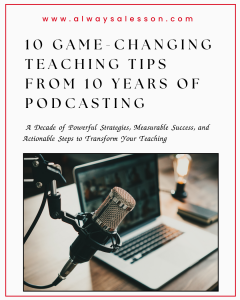Guest Post: Guided Reading
Help me welcome a dear family friend and talented educator as my very first guest author on Always A Lesson!
Hey there!
My name is Jenny and I’m from Glen Allen, Virginia, a suburb of Richmond. I’m currently a stay at home mom to Jack {6}, Charlie {4} and Lizzy {2} but prior to that I was a teacher-teaching is my passion! My degrees are from Virginia Commonwealth University. I have a BS in Psychology {with a concentration in child psychology} and my Master’s in Teaching, Early Education. My certification is pre-k through 6th though I know my heart is in the primary grades. I taught first grade for four years in Hanover County, Virginia. My school was old on the oustide but inside we were truly blessed with the latest and greatest tools for our students. Gretchen encouraged me to share a little funny tidbit about myself-I was set up on a blind date with my now husband by one of my student’s moms my second year of teaching! 🙂
Anywho…
When I think of teaching, the subject / topic that immediately comes to mind is Guided Reading. I could start a fan club, y’all. Seriously, good stuff. I was schooled in Guided Reading so other than my own childhood experiences, I never had any other experiences with teaching reading or writing, any other way. In my experiences both through friends and fellow teachers, I have encountered dread over GR or fears of how much work it is…I disagree {gasp!}. Yes, it’s work, but nothing WORTH doing is easy. I found being organized and willing to go the extra mile during the first year, set me up quite nicely for the years that followed. My goal is to give you a few of those tips here.
In my classroom, and across my grade level, we made every effort to have a maximum of 4 guided reading groups. It certainly helped that our reading block was a solid 90 mins long. During that time, my students would rotate within their group to various stations within my classroom. Included: ART {activities related to our weekly theme / time with playdoh or clay or wiki sticks to promote fine motor development}; Computers {reading and writing activities}; Listening {books on tape followed by a questionaire to assess comprehension}, ABC {word work with current group word patterns and weekly word wall words – which were given to each grade level by our school reading specialist}
A couple of tips that I found most helpful:
*My ABC station stayed the same each week…after my first year it was a breeze because I had it all made!
Mondays – make weekly word wall words and weekly word pattern words with magnetic letters
Tuesdays – rainbow write {5 colors over pencil} weekly word wall words and 5 word pattern words 3x each
Wednesday – Use all 5 weekly word wall words and 5 word pattern words in 5 sentences —wow, that’s a lotta 5’s!
Thursday – weekly word search – highlight the word wall words from the current and past two weeks in a word search
Friday – Word Games – both purchased and handmade {ie sight word bingo}
*Whenever my kids finished their stations early, they were to go to leveled reading {book baskets leveled according to GR levels} and read silently at their desk, a comfy spot in the room, etc. They also could continue reading these books during quiet time after lunch where we had a calm, quiet, bathroom break with the lights off.
*Promote, promote, promote Scholastic Book orders! They are such an easy way to expand your classroom library!
*I only had my class do writing journals on T / TH. This was much more managable for me. We had math and poetry journals also, but they were used during other times.
*Don’t get discouraged! Every ounce of effort, second you spend, etc. is WORTH it. Promise!
Happy {Guided} Reading!!!
😉 Jenny


